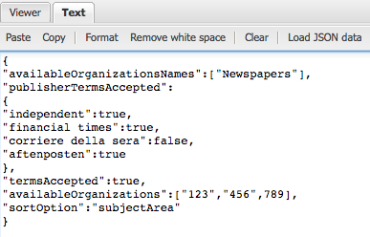Arrays of any built-in or user-defined base type, enum type. Note: There are two differences in the behavior of string_to_ array from pre-9. First , it will return an empty (zero-element) array rather than NULL when the input string is of zero length. It means the first array element starts with number 1. The type of the array can be an inbuilt type, a user-defined type or an enumerated type. The FIRST _VALUE() function is applied to the whole result set and picked the value in the product_name column of the first row.
Using FIRST _VALUE() function over a partition example. This statement uses the FIRST _VALUE() function to return all products grouped by the product group. We will use the film, film_actor, and actor tables from the sample database for the demonstration. PostgreSQL ARRAY _AGG() function examples.
Browse other questions tagged sql arrays postgresql plpgsql or ask your own question. ORDER BY DESC NULLS FIRST LIMIT 1. Arrays can be used to denormalize data and avoid lookup tables. A good rule of thumb for using them that way is that you mostly use the array as a whole, even if you might at times search for elements in the array.
Have you ever looked at a table constraint you have written with an IN clause. This aggregate function returns the value from the first or last input row in each group, ignoring NULL rows. Select first row in each GROUP BY group? NULLs are ignored automatically by the STRICT. PSQL select key of the first elemen of JSON.
Let’s look at some examples of using the LEFT() function. This includes both code snippets embedded in the card text and code that is included as a file attachment. The JSON array is possibly-heterogeneously-typed per the docs. This can put you down the path of correcting the schema. You can combine the IN operator with the NOT operator to select rows whose values do not match the values in the list.
The following statement find all rentals with the customer id is not. With this you can often get some of the functionality you’d want in a single table when you might traditionally have expanded to multiple tables. The broader question may be why you’d actually want to use an array.
We have arrays of integers where each element points to a record in the drivers table, and referential integrity is enforced (e.g., we cannot insert in any of those arrays a driver that does not exist). For example, the first element in the final_positions array identifies the driver that won that particular race. This means that, when you create a table in the database, you can use an array -like syntax (the same as in.NET to define an array type column).
You can have an array of text or an array of numbers, personally I love using arrays when dealing with category tags. Is there a way to select a list of column values directly into an array ? SQL is a language where one task can be solved multiple ways with different efficiency. If the contents of two arrays are equal but the dimensionality is different, the first difference in the dimensionality information determines the sort order.
First of all, you need to set up the following Maven dependency in your project pom. Information is desired from anyone. Like any more esoteric features, you have people both in favor and opposed to them. It’s deeply nested and has multiple arrays — to build this data real-time on every request would be incredibly taxing on the system.

While creating table, for each column, you specify a data type, i. Yet again, Reuven Lerner provided a great write-up to introduce the topic. Highly recommend his post which was my first stop. Among the latter is the array _length( anyarray, int). This is an array slice, which selects only the first array of our scores multidimensional array.
The only problem with the query is that even though we set up an index on the scores column, the index won’t be used because we haven’t indexed both dimensions of the array. Hi, I have a json field called 'elements' in my table demo which contains an array 'data' containing key value. How to create index on json array in postgres.

Ich möchte alle Attribute einer Spalte zusammenfassen – Filippo Vimini mai. Most developers do this by running a query to get much of the raw data, looping over the data and pushing it into a set, appending each new value to the appropriate key. Although sequential scan can rightfully be referred to access methods, it is not on this list for historical reasons.
Keine Kommentare:
Kommentar veröffentlichen
Hinweis: Nur ein Mitglied dieses Blogs kann Kommentare posten.